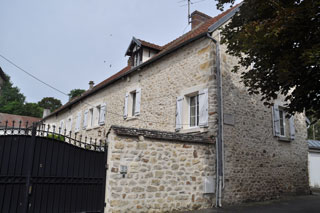Prochain point : lat="49.087046" lon="1.870951"

Joseph Kessel (1898-1979)
Novelist, journalist and scriptwriter
Reports and stories...
Joseph Kessel was born in Argentina in 1898. His parents, of Russian origin, decided to return to Orenbourg, at the edge of the Urals, where the family lived from 1905 to 1908, before settling in France. He obtained his arts degree and, at the age of 17, was working in the foreign policy department of the Journal des Débats. During the First World War, he signed up as a volunteer, first in the artillery and later in the air force. He would later base the subject of his first major success, L'Équipage, on this experience. After the war, he returned to the Journal des Débats and also wrote for various other publications, including La Liberté and Le Figaro.
...from the ends of the earth
Driven by his need for adventure, he embarked on a double career as a foreign correspondent and novelist. His first book, La Steppe Rouge is a collection of short stories about the Russian revolution. After L'Équipage (1923), he published Les Captifs (winner of the Grand Prix du Roman from the Académie Française in 1926), Belle de Jour (1928), and a biography of his friend Mermoz, a heroic aviator... He wrote some of his novels, including Les Cavaliers (1967), at his house in Avernes. A war correspondent from 1939 to 1940, he joined the French Resistance with his nephew, Maurice Druon, with whom he wrote, in May 1943, the words of the Chant des Partisans, which the Resistance adopted as an anthem. After the liberation of France, he returned to his job as a foreign correspondent, travelling to Palestine, Burma, Afghanistan and Africa. His book Le Lion (1958), based on his memories of Kenya, sold several million copies. In 1962 came the ultimate recognition, when he was elected to the Académie Française. Over the course of his life, he published no less than 80 novels. In 1961, he and his wife bought this country house, a former lime kiln, surrounded by one and a half hectares of meadows and woods. He remained here until his death, on 23 July 1979.





